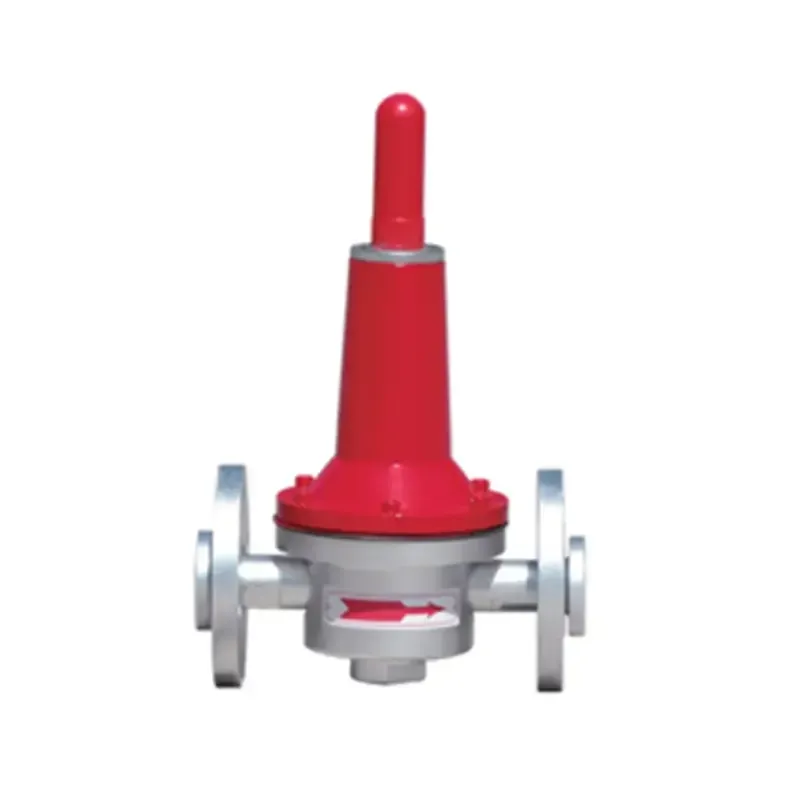
Nov . 29, 2024 11:18
Back to list
Gas Pressure Control Valve for Efficient Pressure Regulation in Pipeline Systems
Understanding Gas Pressure Reducing Valves A Key Component in Gas Distribution Systems
Gas pressure reducing valves (PRVs) are essential components in various industrial, commercial, and residential applications. Their primary function is to manage and reduce high pressures from gas supply lines to a lower, more usable pressure, ensuring the safe and efficient operation of downstream equipment. This article delves into the importance, working mechanism, applications, and maintenance of gas pressure reducing valves.
Importance of Gas Pressure Reducing Valves
Gas distribution systems often operate at high pressures to facilitate efficient transportation. However, many end-use applications, from heating systems to industrial processes, require much lower gas pressures. Without a pressure reducing valve, the risk of over-pressurizing downstream equipment can lead to failures, safety hazards, and costly repairs. By regulating the gas supply, PRVs protect systems from damage and help maintain operational efficiency.
Moreover, these valves contribute to energy conservation. By ensuring that gas is delivered at optimal pressures, they minimize gas wastage and enhance system performance. In an era of increasing energy costs and environmental awareness, such efficiency is paramount.
Working Mechanism
Gas pressure reducing valves function by utilizing a combination of mechanical and pneumatic principles. At their core, PRVs consist of a valve body, a diaphragm, and a spring. The diaphragm flexes in response to pressure changes, allowing the valve to open or close automatically.
When gas enters the valve, it encounters a spring that is pre-set to a specific pressure level. This spring tension can be adjusted based on the desired outlet pressure. As gas flows through the valve, the diaphragm moves in accordance with the pressure difference between the inlet (upstream) and the outlet (downstream). When the upstream pressure exceeds the pre-set level, the diaphragm moves to close the valve partially, reducing the flow and thus the outlet pressure. Conversely, if the outlet pressure drops below the desired level, the diaphragm allows more gas to flow through, balancing the pressure.
This self-regulating mechanism makes PRVs incredibly reliable and efficient, as they continuously adjust to changes in demand or pressure fluctuations within the system.
gas pressure reducing valve

Applications
Gas pressure reducing valves are prevalent in numerous applications. In residential settings, they are commonly found in natural gas lines, ensuring that homes receive gas at safe and usable pressures for appliances such as stoves, furnaces, and water heaters. In commercial facilities, PRVs help control gas delivery in heating systems, ovens, and industrial burners, maintaining consistent operation and safety.
In industrial environments, these valves play a critical role in gas processing, chemical manufacturing, and power generation. They are integral in providing the necessary pressure for equipment such as compressors, turbines, and burners, all of which require precise pressure levels for optimal performance.
Maintenance of Gas Pressure Reducing Valves
Maintaining gas pressure reducing valves is crucial for ensuring their longevity and functionality. Regular inspections should be conducted to check for any signs of wear, corrosion, or damage. It is essential to monitor the pressure settings regularly, as drifting pressures can indicate the need for adjustments or repairs.
Additionally, the valve should be cleaned periodically to remove any buildup of debris, which could impede its operation. In some cases, it may be necessary to replace worn or damaged components, such as the diaphragm or spring, to restore the valve's performance to optimal levels.
Conclusion
Gas pressure reducing valves are fundamental components that play a vital role in the safe and efficient distribution of gas in various applications. By controlling the pressure of gas to safe and usable levels, they ensure the protection of downstream equipment, enhance energy efficiency, and minimize safety risks. Understanding the working mechanism, applications, and maintenance practices associated with PRVs is essential for anyone involved in gas distribution systems. As industries and households continue to rely on gas for energy, the importance of effective pressure regulation through well-maintained PRVs cannot be overstated. Investing in quality valves and adhering to maintenance protocols safeguards not only equipment but also the safety and comfort of end users.
Latest news
-
Safety Valve Spring-Loaded Design Overpressure ProtectionNewsJul.25,2025
-
Precision Voltage Regulator AC5 Accuracy Grade PerformanceNewsJul.25,2025
-
Natural Gas Pressure Regulating Skid Industrial Pipeline ApplicationsNewsJul.25,2025
-
Natural Gas Filter Stainless Steel Mesh Element DesignNewsJul.25,2025
-
Gas Pressure Regulator Valve Direct-Acting Spring-Loaded DesignNewsJul.25,2025
-
Decompression Equipment Multi-Stage Heat Exchange System DesignNewsJul.25,2025

